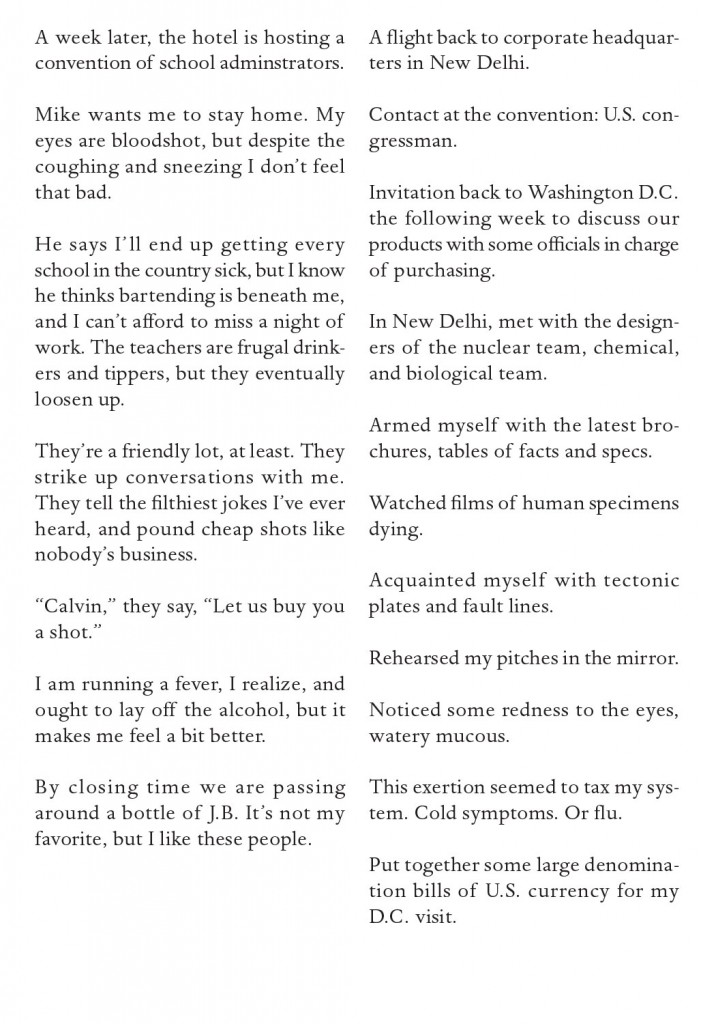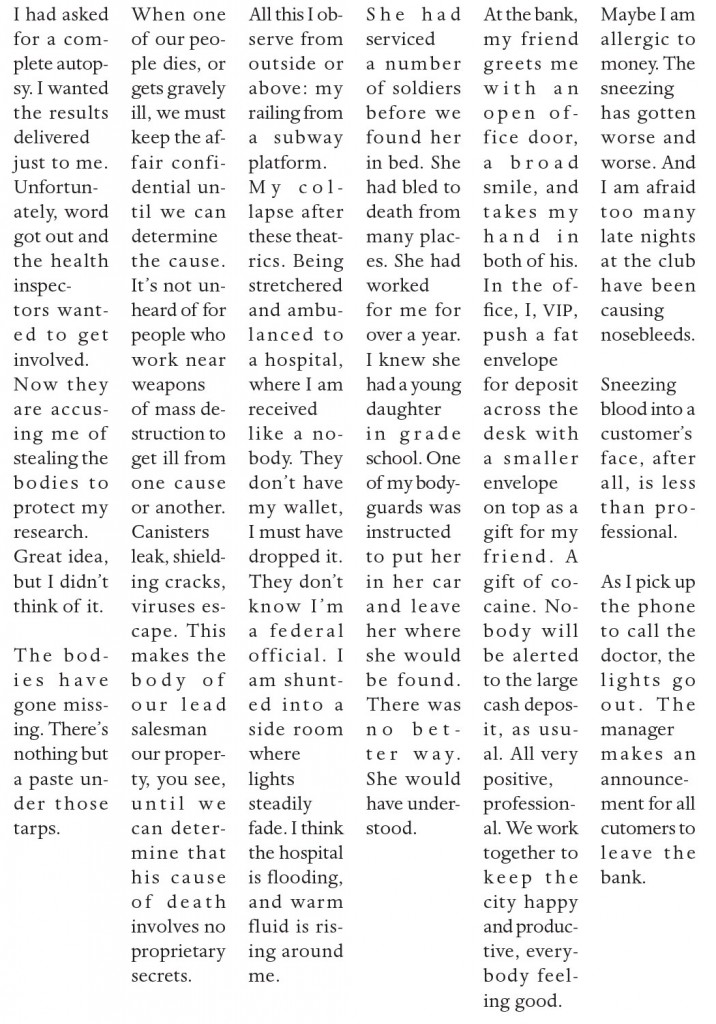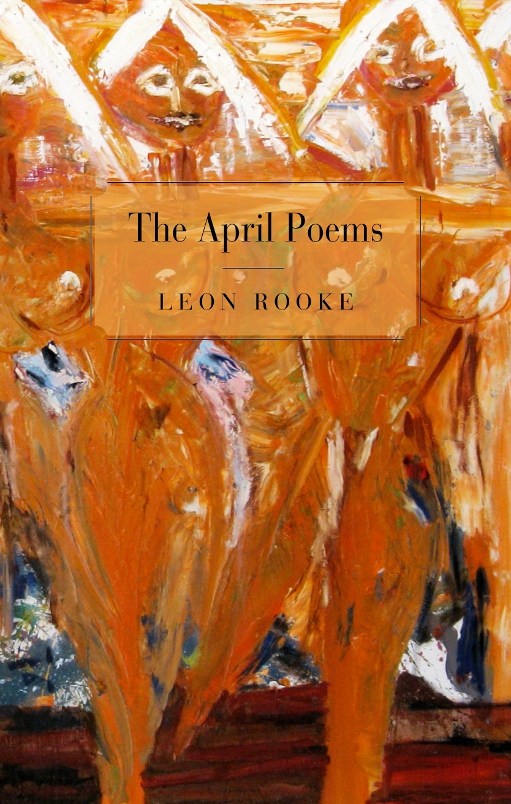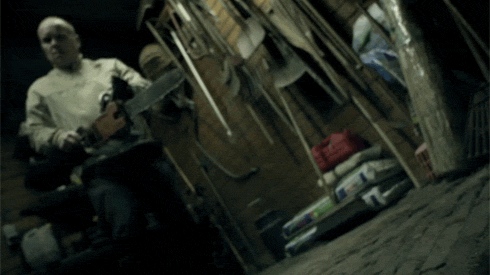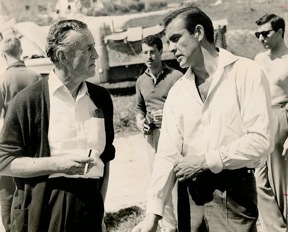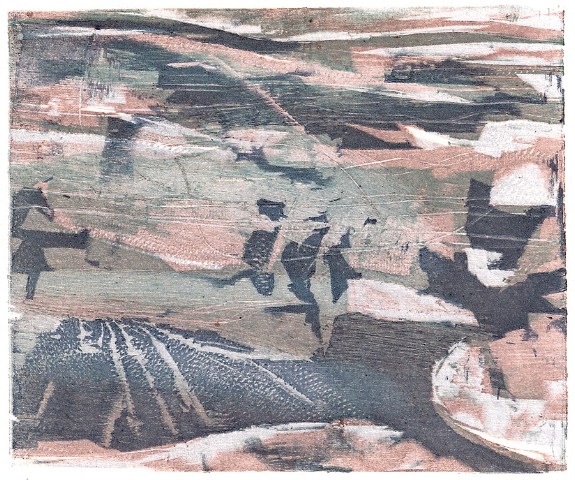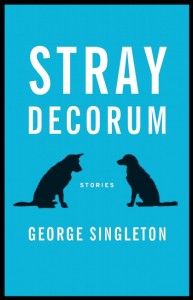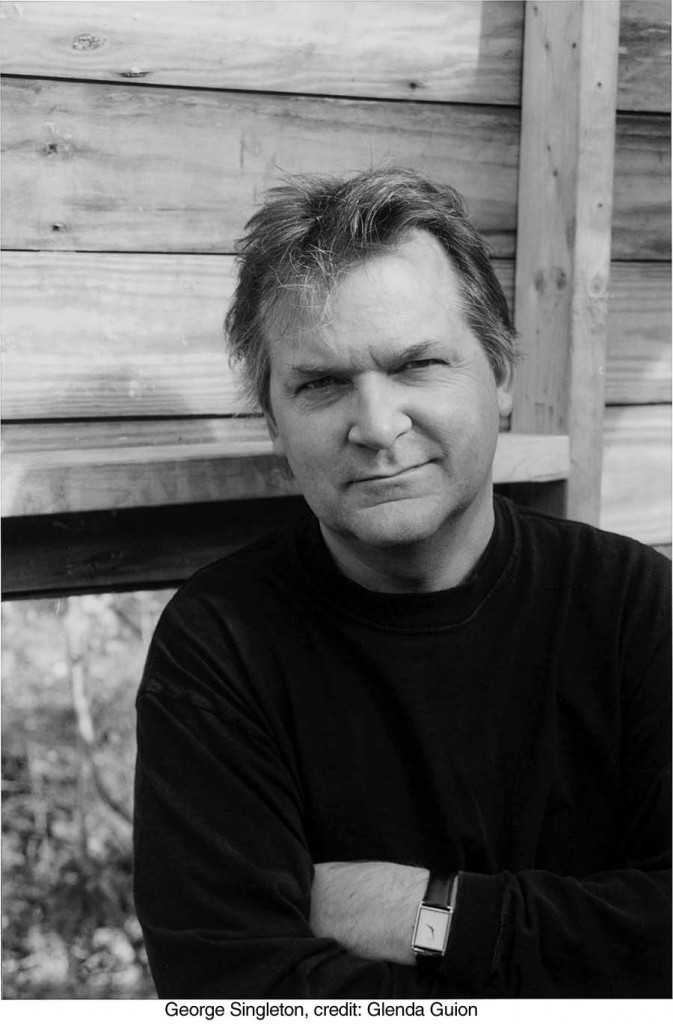
George Singleton lives in South Carolina and teaches at South Carolina Governor’s School For The Arts & Humanities. He is the author of two novels—Work Shirts for Madmen and Novel—one book of writing advice, and five books of short stories, including The Half-Mammals of Dixie, Drowning in Gruel, and Stray Decorum. In 2009 Singleton was a Guggenheim Fellow, and in 2011 he was awarded the Hillsdale Award for Fiction by The Fellowship of Southern Writers.
It was a real treat to talk to George Singleton, a writer I’ve admired since early 2004, when the friend I was with at Davis-Kidd Booksellers in Nashville, Tennessee, put a copy of The Half-Mammals of Dixie in my hand and told me how great it was. I sat there in the store and read “It Itches, Y’all,” a story about a kid whose life is ruined after staring in an educational video on the prevention of head lice. His life-ruining line: “It itches, y’all.”
While talking to Singleton, he reminded me of what another Southern writer, Harry Crews, once said, “Stories [is] everything and everything [is] stories… It a way of saying who [you are] in the world.” George doesn’t have answers to questions—he has stories, stories to illustrate the question and dramatize it. From everything to his stray dogs to his Whitmanian list of items on his desk, George Singleton is the real deal—modest, funny, individualistic—a writer hell bent on preventing you from becoming a rhinoceros.
Jason DeYoung (JD): Let’s talk about how Stray Decorum came about.
George Singleton (GS): I have to go all the way back to about 2005 or 2006. I had this copyeditor who was great, but he had to go off for a while. He subcontracted my manuscript out to an eighty-five-year old woman who used to work at The New Yorker. So, she sends back my manuscript—this was for a novel called Work Shirts for Madmen—and she had really changed a lot, especially the voice. One of the big things she changed was when one of the characters said something like, “I only want to go home and take a nap.” She’d change it to, “I want only to go home and take a nap.” She kept changing that “only” word—I didn’t realize how often I used it, and evidently incorrectly. And she wrote about the third time I’d used it: “Do you people in the South not know this rule of grammar?” So then next time she marked it, I wrote “I want only to kill you,” off in the margins.
Well, as I was correcting her corrections, I’d been writing stet. stet. stet. forever. [Stet being an editorial term for “let it stand.”] And I mean forever. A bunch of them. Like if I’d written, “I ain’t got no money.” She’d corrected it to “I have no money.” (Sighs) I’d write: “stet.”
And so I decided to write a bunch of stories about this character named Stet. And I wrote like fifty of them, and about thirty-five came out in magazines, and I got a collection together, and I sent them to my agent—about 450 pages of short stories. She said, “No one is going to publish this. (And, by the way, George, I don’t even want to try to sell another collection of yours until you write a novel I like.)” So, I said, “You’ve never liked anything I’ve written, so I break up with you.”
Now I’ve got a new agent—her name is Kit Ward. And she said, “No one is going to print 450 pages of short stories. But you’ve got all these dog stories.” And I said, “I’ve already written a God-damn dog-story book, you know, called Why Dogs Chase Cars.” And she said, “You can write another one, you idiot.”
So, she’s the one who got Stray Decorum together. And then next year No Cover Available will be coming out, which will be the rest of the stories.
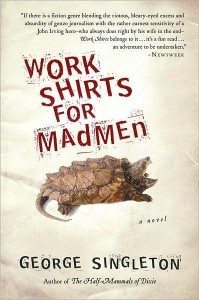
JD: Let’s talk about opening paragraphs. In your story “I Think I Have What Sharon’s Got,”—one of my favorites—you start with what amounts to a page-length paragraph, in which you smash together about eight or ten topics. How do you think about opening paragraphs?
GS: Sometimes, when I’m starting off a story, and I don’t really know what I’m going to write, I’ll just start writing real fast, like a 500-word sentence or something, just to see what comes out of my walnut-size brain. A lot things will show up. And then I go back, in that 500-word sentence, and say, “Okay, where’s the main conflict?”
What I want to do, most of the time—and it’s kind of cheating—is just get some of that journalistic who, what, where, how, why into the first paragraph, so that the reader will say “I see the direction of this story, and I’m comfortable with that.” Normally, I do a reader-friendly first paragraph. Except “I Think I Have What Sharon’s Got” doesn’t follow that model. (Laughs)
JD: I’ve been reading David Byrne’s How Music Works. In it he talk about how music is often written sonically for the particular space—a club, a cathedral, a car stereo. Do you have a particular reader in mind when you write, a particular place you have in mind for that reader to be in—including perhaps a particular “head space”?
GS: The reader I have in mind is probably me. And I’m just writing, thinking this may not get pass the vacuum.
I’m not sure there are a whole lot of people out there—and I hope there aren’t—who are like me. So, my reader, in my mind, is a liberal, probably a democrat, probably scratching his or her head, going what the hell is going on in America—this doesn’t make any sense.
You know, I went to see a production of this play, The Crucible. And I thought, this is what’s going on right now in America: People caught up in a fervor. Reminds me of Ionesco’s play, Rhinoceros, where everyone is turning into rhinoceroses. Why can’t we step back and say, “This doesn’t really make any sense.” The reader I’m looking for is that person: the one who is stepping back saying, “This world isn’t making a whole lot of sense.”
JD: And how do you think about structure and building a story? What’s your “habit of art”?
GS: Consciously I don’t sit down and think, “okay, word 4,000, I need a climax.” Normally, what I’m doing is in my opening paragraph is trying to get the reader accustomed to the water’s temperature and then I usually start off with some dialogue between two characters, and that causes some kind of action, some kind of conflict going on. And then I just kind of see where it goes. Rarely do I know where it’s going to go, except I usually have a vague sense of the ending. For instance, if I start a story off in a used car lot, it’s either going to end in a used car lot, or with the characters talking about a used car lot, or driving pass a used car lot.
JD: So, how much revision do you do?
GS: I sort of rewrite the whole time, rereading what I wrote the day before, and then rewriting as I reread. And then I’ll send it off to a magazine. And the editor will say, “I love the beginning but the ending sucks.” And I’ll send it to another magazine, and they’ll say, “Hated the beginning, but I loved the ending.” And then I’ll go, “You sons of bitches.” And then I might tinker with it some more.

JD: You’ve published five books of short stories and two novels, are you still being influenced by writers you read? And, if so, who are the most recent?
GS: Yeah, of course. When I read a short story and go “God-damn, I wish I’d thought of that,” that’s my highest compliment. I read like crazy. Just finished a collection by Dan Chaon, and went, “These are great stories.” I’m reading an advance readers’ copy of Jamie Quatro’s new book, I Want To Show You More, and I keep saying, “God almighty, that’s a great story” after I finish one. I read a book of essays by John Jeremiah Sullivan called Pulphead, which has a great voice. But also my buddies like Ron Rash and Tom Franklin. I read a lot of people who aren’t similar to me. They’re kind of darker, more gothic, and usually not very comedic. Lewis Nordan is just great.
JD: While we’re on books, what book or books are you an evangelist for?
GS: The Complete Flannery O’Connor I reread over and over. And, oddly enough, John Cheever, who from a technical point of view is just brilliant. A lot of times, I’ll ask while writing, How am I going to go from point A to point C?” And how I do it is a section break, and how Cheever does it is just seamless. But there’s a bunch more—William Gay, Cormac McCarthy, Raymond Carver—and they all, in a way, feed me well.
JD: Some of your best stories, in my opinion, are about fathers and sons, and in these stories the father is usually off-kilter somehow. I’m thinking here of “The First to Look Away” and “Perfect Attendance” in Stray Decorum but also some stories in previous collections. What is it with fathers and sons?
GS: When I was about forty years old, I wrote my very first dad-and-lad story, and The Atlantic took it. And I went, Jesus Christ, why hadn’t I written any of these stories before? They’re so easy. I can dip into the well of my childhood since my father was kind of eccentric. My father died when I was twenty-four, and he had gone through a shitload. He’d had cancer in 1960 when he was thirty-five, he’d fallen forty-five feet into the hold of a Merchant Marine ship when he was thirty-eight, breaking his hip and back and a number of other bones. He was a morphine addict. He was an alcoholic. He had all these artificial hip operations. And he was kind of nuts—in a good way, though. He made sure I met people in different stations in life. We were a lower-middle class family. So, I don’t have to use much imagination to remember these feelings of a kid—a little bit embarrassed by his father, a little bit curious about what his father is doing—which makes the dad-and-lad stories easy to write and fun.
JD: In “Perfect Attendance” the father gives his son several pieces of advice, one of which is “always have a dog with you…get a stray… don’t go buying some kind of fancy pedigree.” Is this good advice?
GS: That’s probably just autobiographical. (Laughs) In my experience, stray dogs—and I’ve had a zillion—have been loyal, smart, and not finicky. They’ll eat anything. They’ll eat the worst dog food—George Jones Dog Food or whatever. Also, it makes me feel better about myself for taking in a stray instead of buying some thousand dollar spaniel. Strays have just been good. Like us, they seem to be animals who are doing the best with what they’ve got.

JD: You talk about rifle writers and shotgun writers in Pep Talks—which are you? Is one better?
SG: Not sure either’s better. I’m a shotgun writer because I’m just writing story after story. If I were a baseball player, I’d be a solid .250 hitter. A rifle writer will bat .500, but it takes a long time. I’m not going to spend six months writing a story, which I think is crazy.
JD: In Pep Talks you tell your reader to keep certain items on their desk—an Allen wrench to remind yourself to tighten up sentences; a picture of a chimpanzee to remind yourself to proofread; a whetstone to remind yourself to keep your wits sharp. What’s on your desk?
GS: (Laughs) I’ve got my father’s first artificial hip. I’ve got something called a Cherokee marble that I found in the Reedy River. My father’s old pocket watch. I’ve got something… (Laughs) Oh, man, I shouldn’t tell you this. Okay, this comes from a printing press, and it’s from where you put the letters up, and this thing is called a butt plug, and an Allen wrench goes into it to hold the frame onto a printing press. I have a mouthpiece to a tuba I found on Kure Beach. My old stopwatch. A knife. But you know what I’m missing? My grappling hook. I think my dog sitter stole it. Let’s see… A baseball signed by Charlie O’Brien, saying “catch you later,” which kind a cracks me up. Old feathers. A Playboy Mansion swizzle stick. An old cat’s paw. A bunch of dog chews for when the dogs come back here. I have an arrowhead. My zippo lighter, pens, a dictionary, my father’s other (second) artificial hip—he had a lot of artificial hip operations. I’ve got the top off of something called Begonia Salad that I got in Kentucky—I think they meant baloney salad. Up above me I have a Howard Finster plywood cutout of Santa Claus, and on it, it says “Santa in the kids’ world. He only teaches kids to be good. He is just another toy.” I don’t know what that means. (Laughs) Is that enough?
JD: Yeah, thanks. I heard that for The Half-Mammals of Dixie you hung around flea markets. Were there places you hung around for this collection? There are a lot of original bar scenes in this book.
GS: No, not really. I don’t go to bars anymore, like in town. If I’m out of town, I’ll go to a bar. So, I try to get out of town four or five times a week. (Laughs)
No, these stories just kind of came to me. It’s funny you should mention that about the flea markets, because I’m kind of out of ideas, and have been thinking I should go hang out in bars. But basically I get ideas in Wal-mart, K-Mart, Bi-Lo, which is the closest grocery store. I’ll just walk through there, pick up on the odd things people are saying, and I’ll go, “Oh, I’ve got to go home and write.”
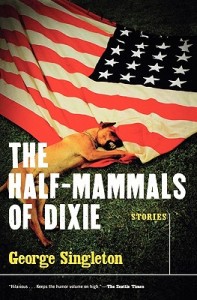
JD: You’ve written and talked about how literary fiction doesn’t sell well. Why do you think the figures for literary fiction stink?
GS: I don’t know, but I came across this guy the other day who has this novel out, and it’s a detective novel (and I’m not going to say his name or anything). It’s the worst written thing in the world, and this guy was telling me how to write. He said, “What you want to do is take out all of your adverbs”—which I don’t use that often—“and you only want to say ‘said’ when writing dialogue.” And then I looked in his book, and everything was “he sputtered,” “he opined,” nothing was like “he said.” So, what the guy was telling me he didn’t do himself. And this book of his is selling well.
My only theory on this… my only analogy is that people in the United States eat a lot more baloney than they do filet mignon, but that doesn’t mean baloney is good for you. For some reason, people read and eat a lot of baloney. And I know that sounds highfalutin, and I feel bad about it, but sometimes I just go “Good God, what are these people buying?!” And it’s bad. And it’s going to get worse because all the independent bookstores are dying off, the newspapers are dying off along with their book review pages. There’s just going to be people going into a big chain outfit and buying whatever they see on that big stand, saying “I’m a big rhinoceros and I’m going to do what all the other rhinoceroses are doing, etc.”
JD: I’m going to ask forgiveness for this next question in advance. You have a lot of scamers in your fiction—at times it seems everyone is on the make. Is fiction writing a kind of scam?
GS: (Laughs) Man, that’s a good question. (Pause) I guess in a way it is. You’re trying to put something out there in the world; you’re trying to say, “Hey, this is something you need to read.” Just in the same way, like in an info-commercial, you’re saying, this is a pill you need to take, or this is a chair you need to sit in. In a weird way, it is. It’s like holding a Tupperware party. And I’m saying, buy this book, because this is going to be more laughs than you’re going to have otherwise. Man, I’ve never thought out it like that. Geez, thanks a lot. I’m going to commit suicide—I’ve been a prick all my life. (Laughs)
JD: I didn’t mean to make you re-think your life. But it reminds me of what Annie Proulx says, “I try to make the stories I write interesting and entertaining. I don’t write to inspire social change.”
GS: What I think is that there’s a weird continuum. If you had a big spectrum, you’d have entertainment on one end and knowledge on the other end, and somewhere in the middle you have what I’m trying to do. I’m trying to make you laugh and teach something about humans. I’m trying to get in that middle area.
—George Singleton and Jason DeYoung



